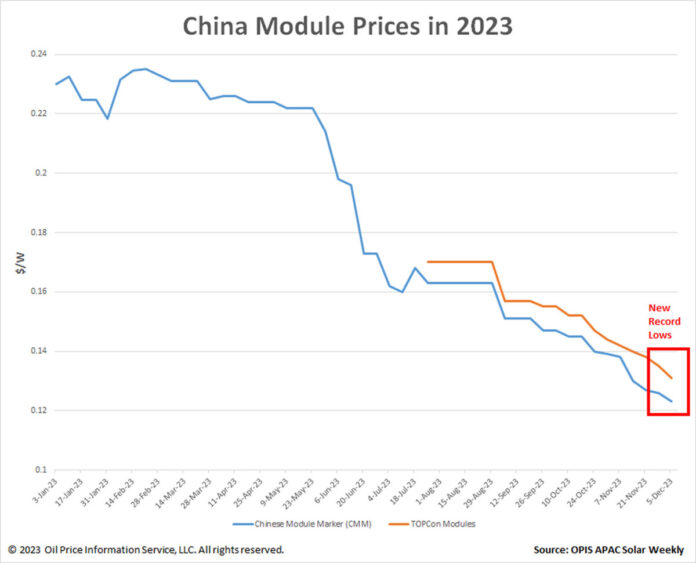The Chinese Module Marker (CMM), the OPIS benchmark assessment for Chinese mono PERC modules, was assessed at $0.123 per W, a $0.003/W decrease week on week, while TOPCon module prices declined $0.004/W to $0.131/W. These new lows occur amid weak year-end demand as module manufacturers trim manufacturing.
Prices in China have fallen particularly sharply. While most tier-1 players, including a top 5 solar major, provide modules for roughly CNY1 ($0.14)/W, some dealers cut prices beyond that psychologically significant barrier. According to numerous manufacturers, PERC modules can be purchased for as little as CNY0.72 ($0.10).
Winter is a “weaker period of the year, thus lower demand,” according to a solar business veteran. According to a module vendor, China’s module makers are attempting to clear their stockpiles during the off-season. Chinese corporations are rushing to sell stock before the end of their fiscal year in December, according to another veteran.
In an oversupplied environment, operating rates are dropping. According to a module manufacturer, some medium-sized solar manufacturers are already taking a break. Factories in China typically close for the Spring Festival, and a shutdown two months before the vacation shows that “factories don’t have orders,” according to the module maker. According to an experienced industry participant, module manufacturing operating rates range between 50 and 60%.
Low prices remain on the horizon as 2023 comes to a close and in the coming year. According to a prominent solar producer, 2024 will be a difficult year. Low pricing will last for a while, with the industry gradually stabilising in 2025 and then recovering, according to the developer.
OPIS, a Dow Jones firm, offers petrol, diesel, jet fuel, LPG/NGL, coal, metals, and chemicals, as well as renewable fuels and environmental commodities, as well as energy prices, news, statistics, and analysis. In 2022, it purchased pricing data assets from Singapore Solar Exchange and began publishing the OPIS APAC Solar Weekly Report.





